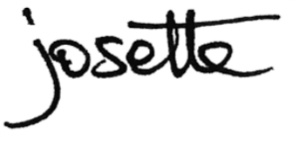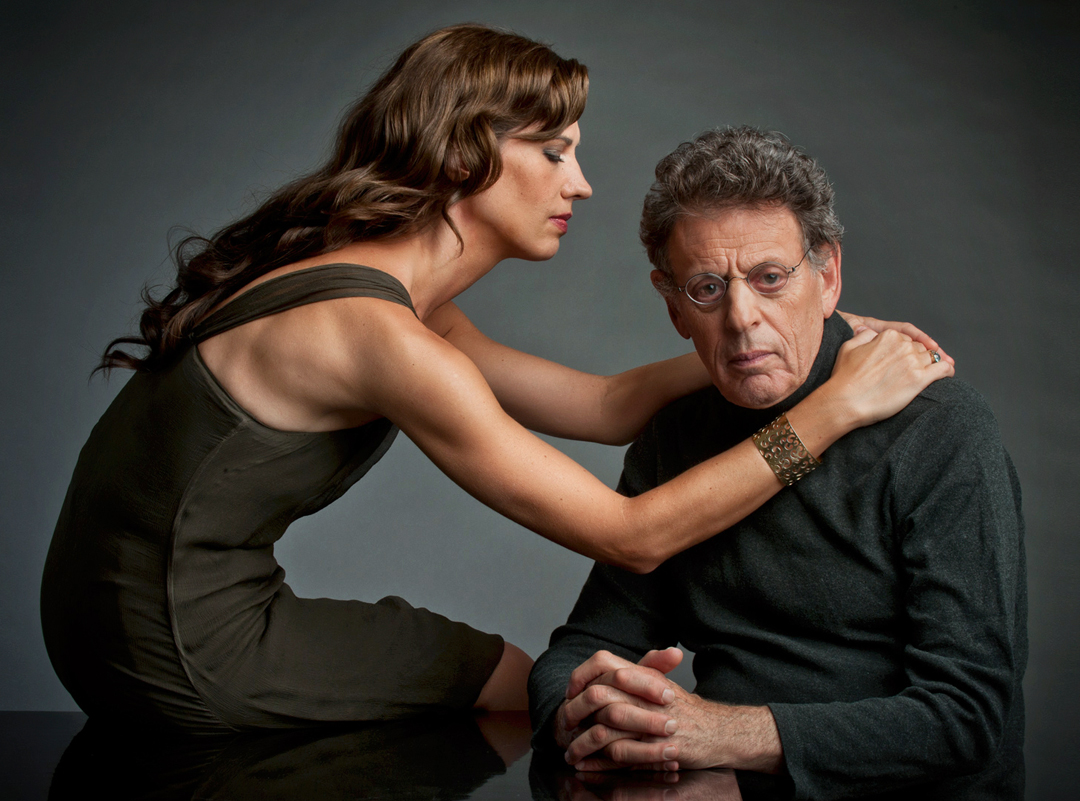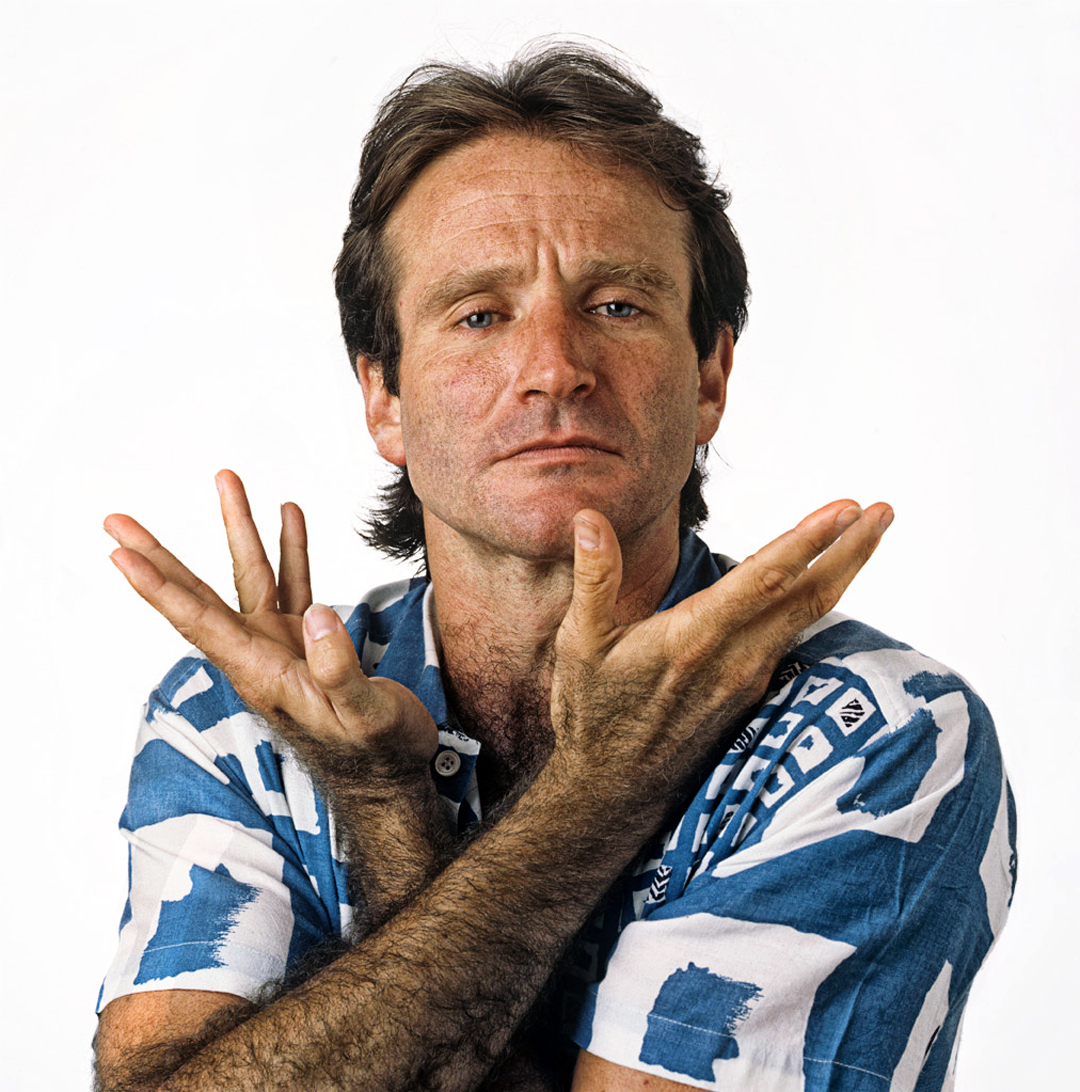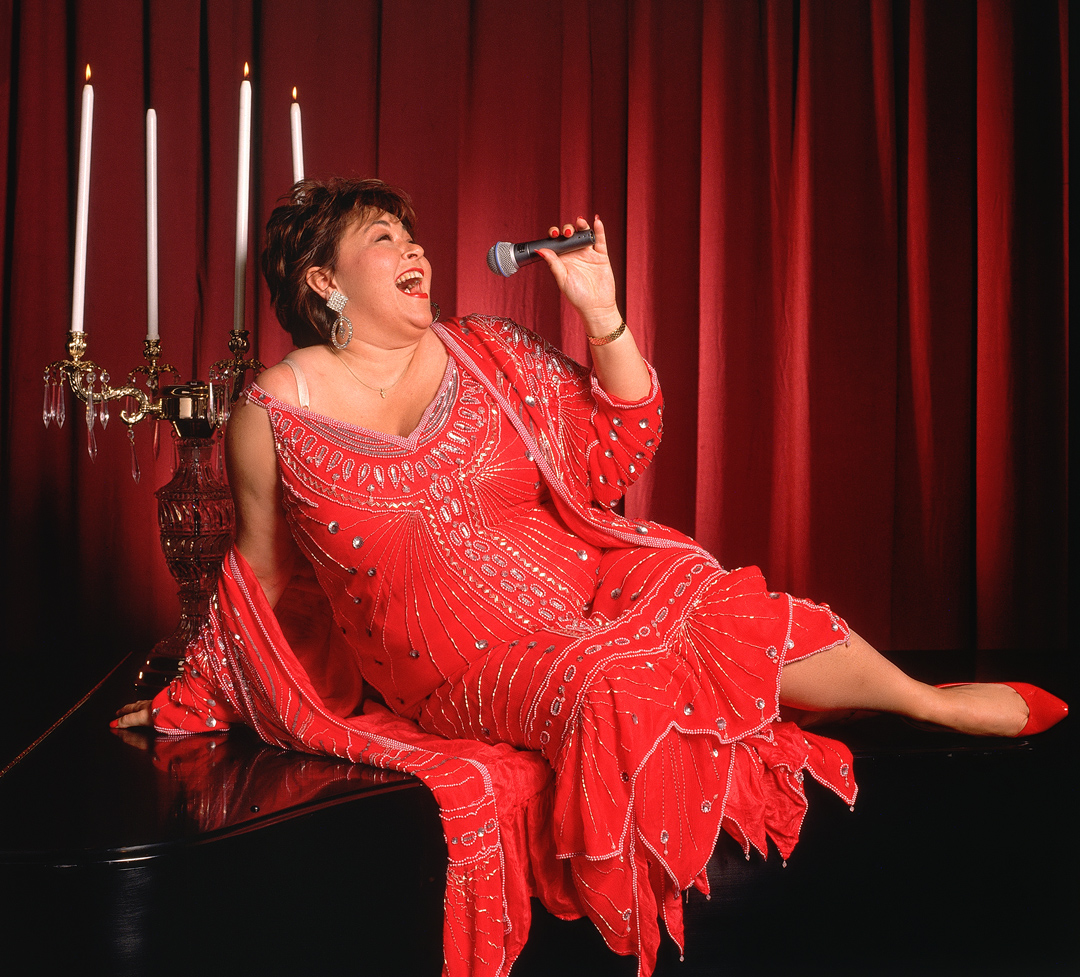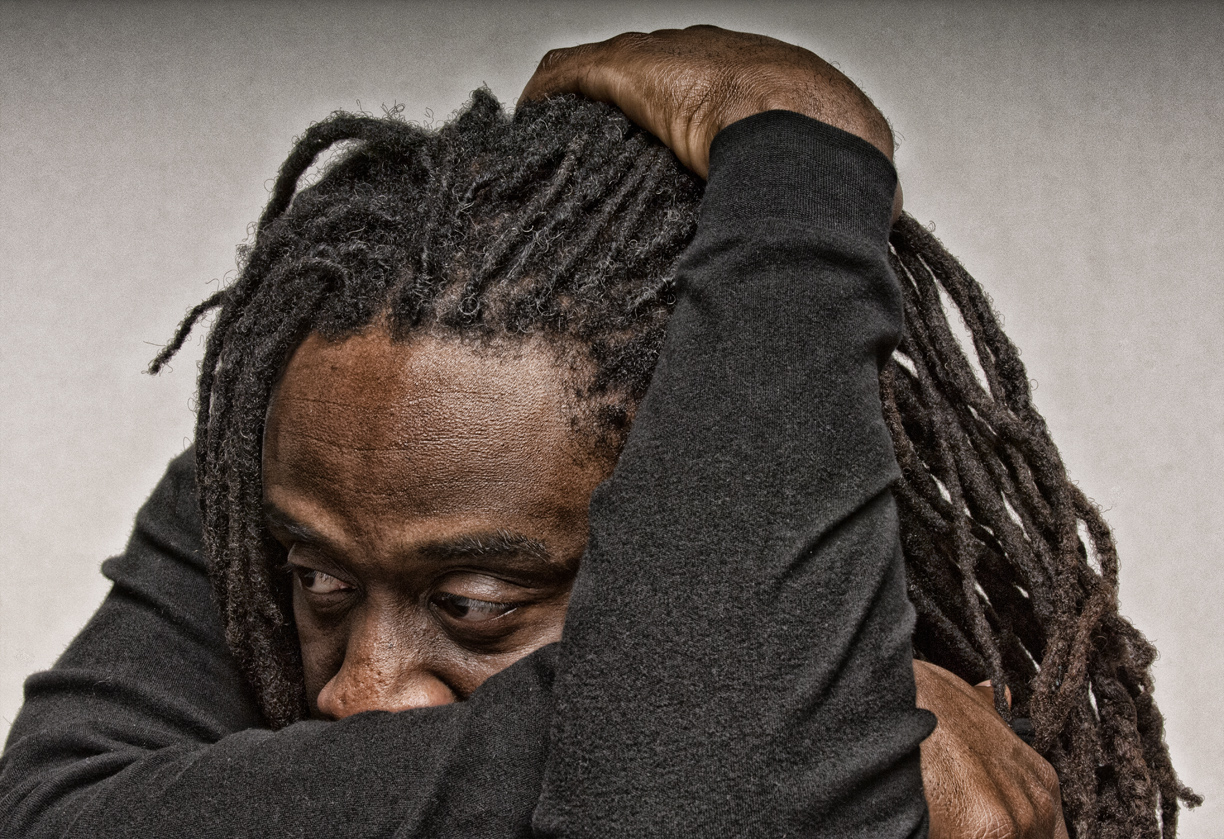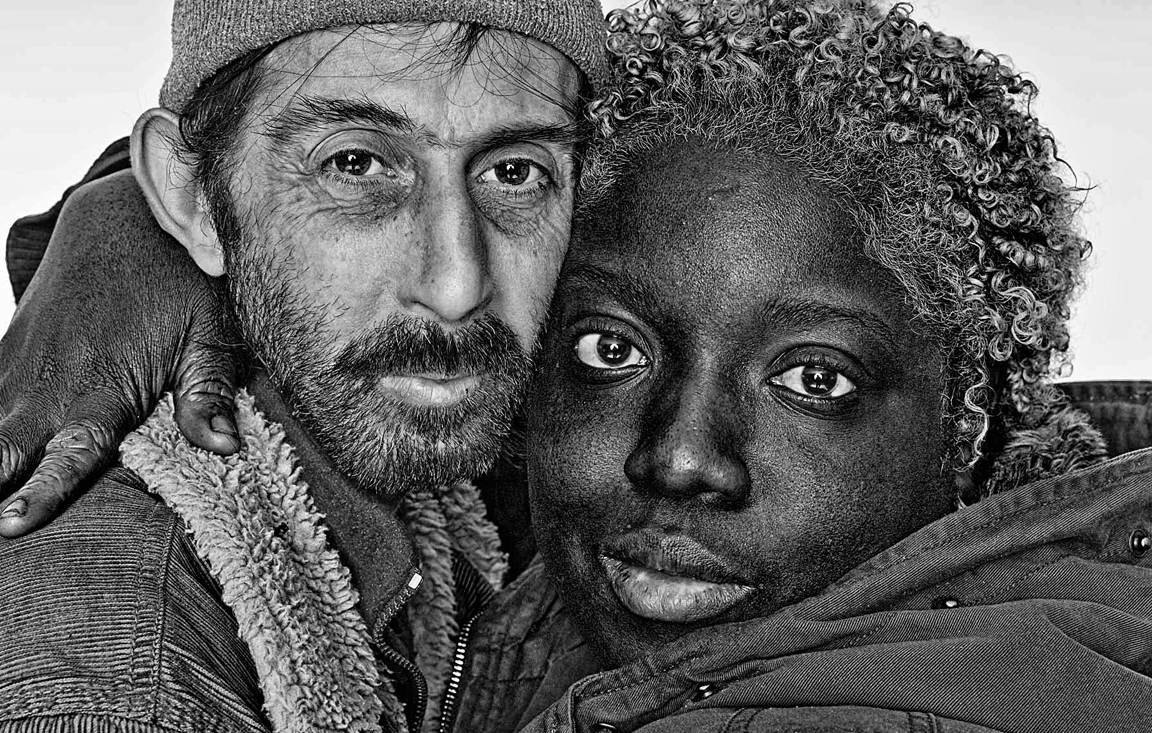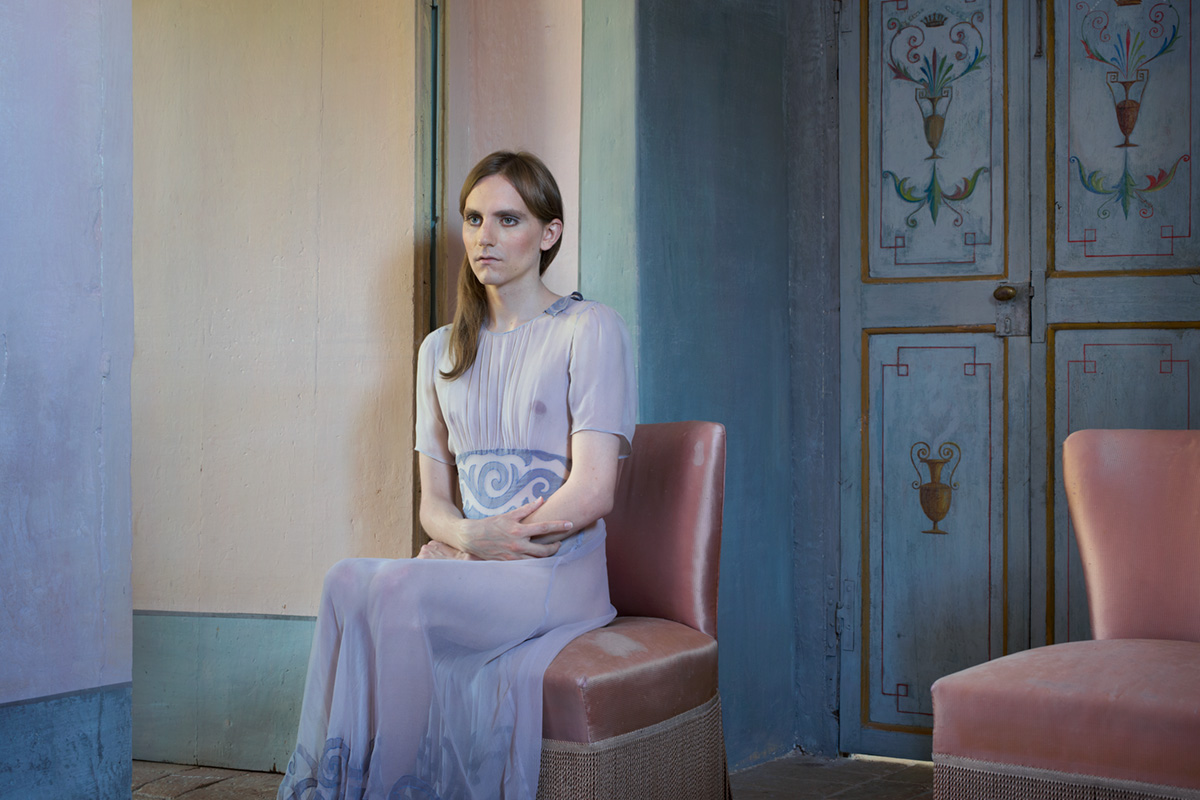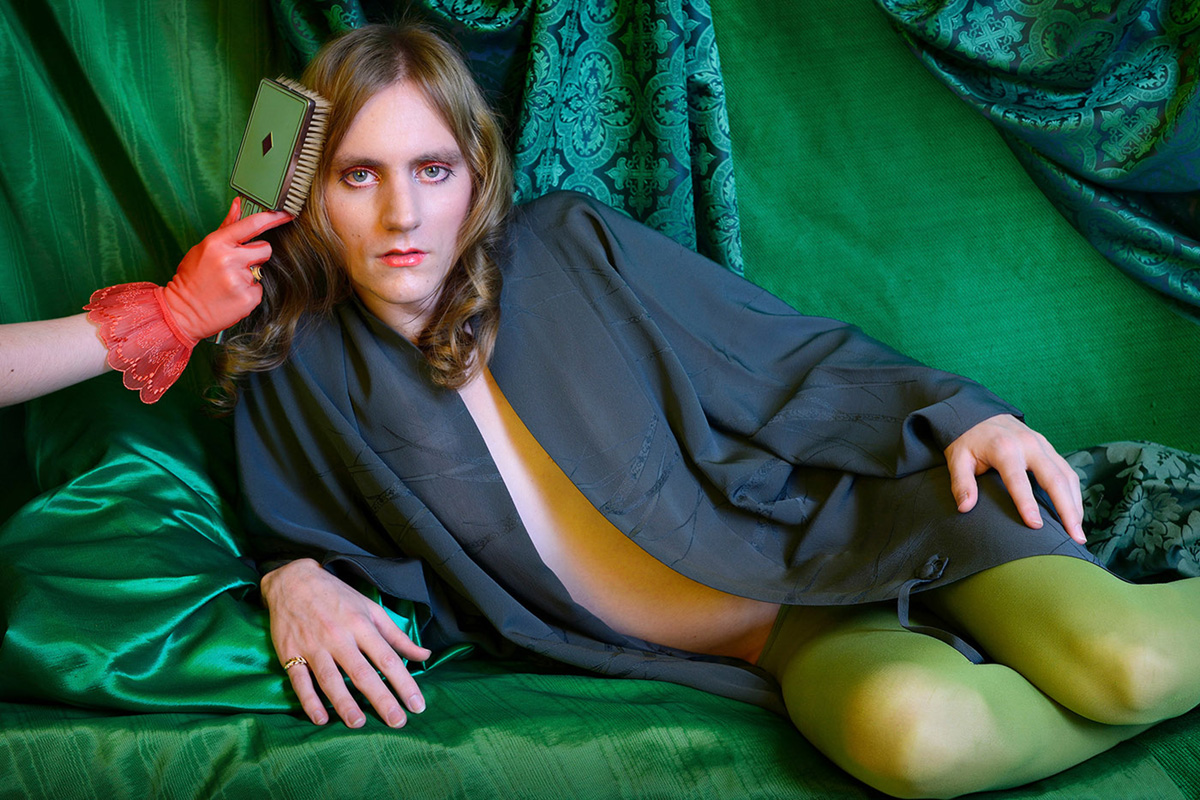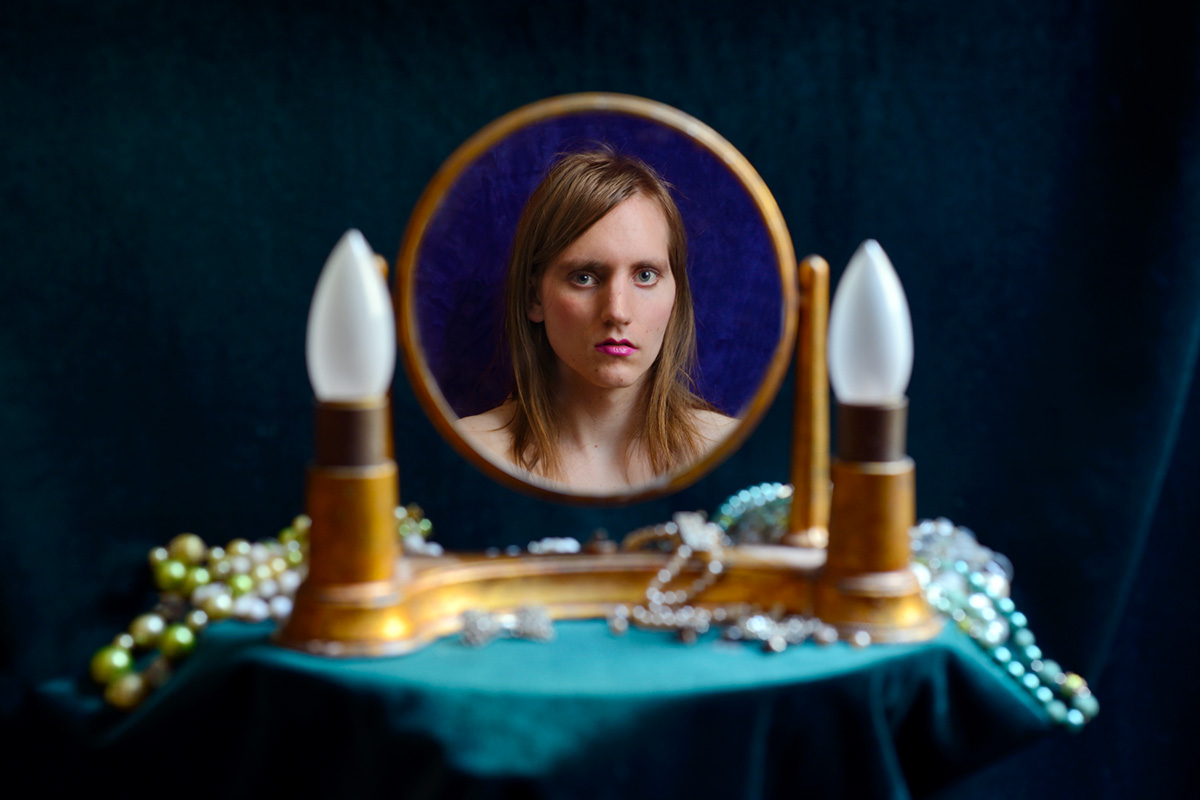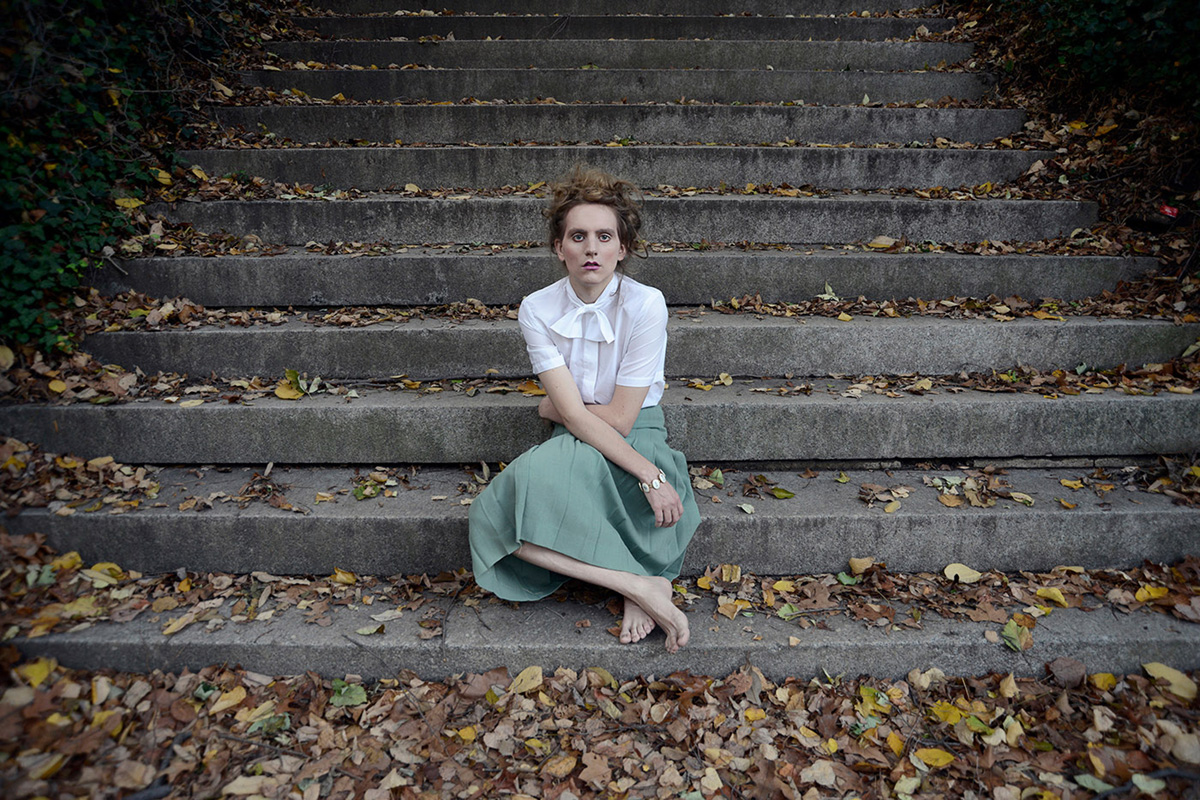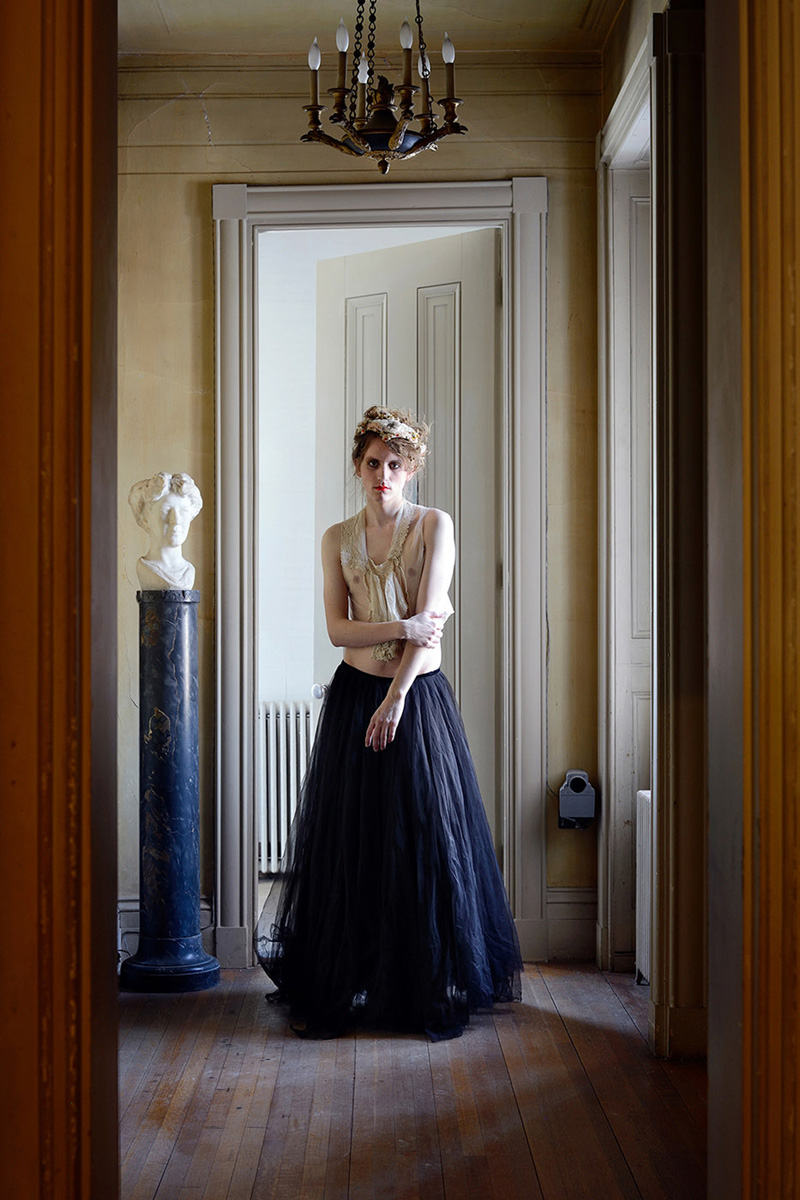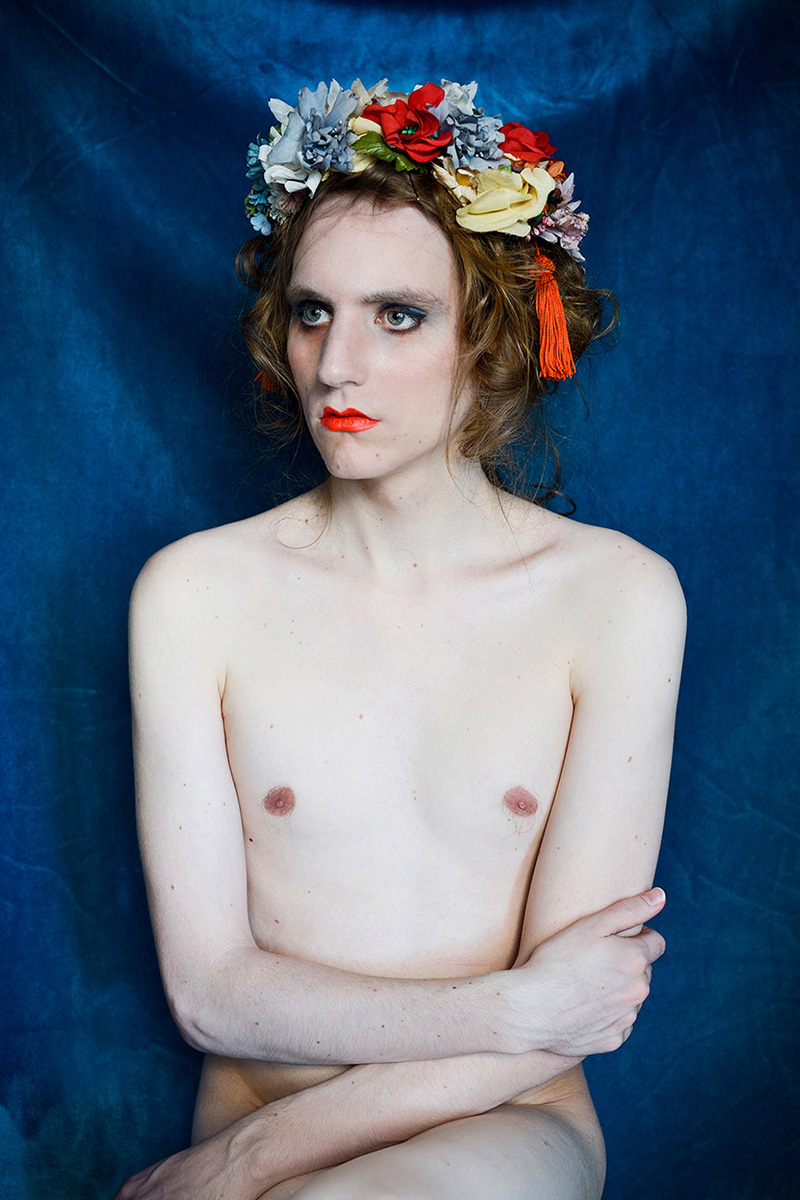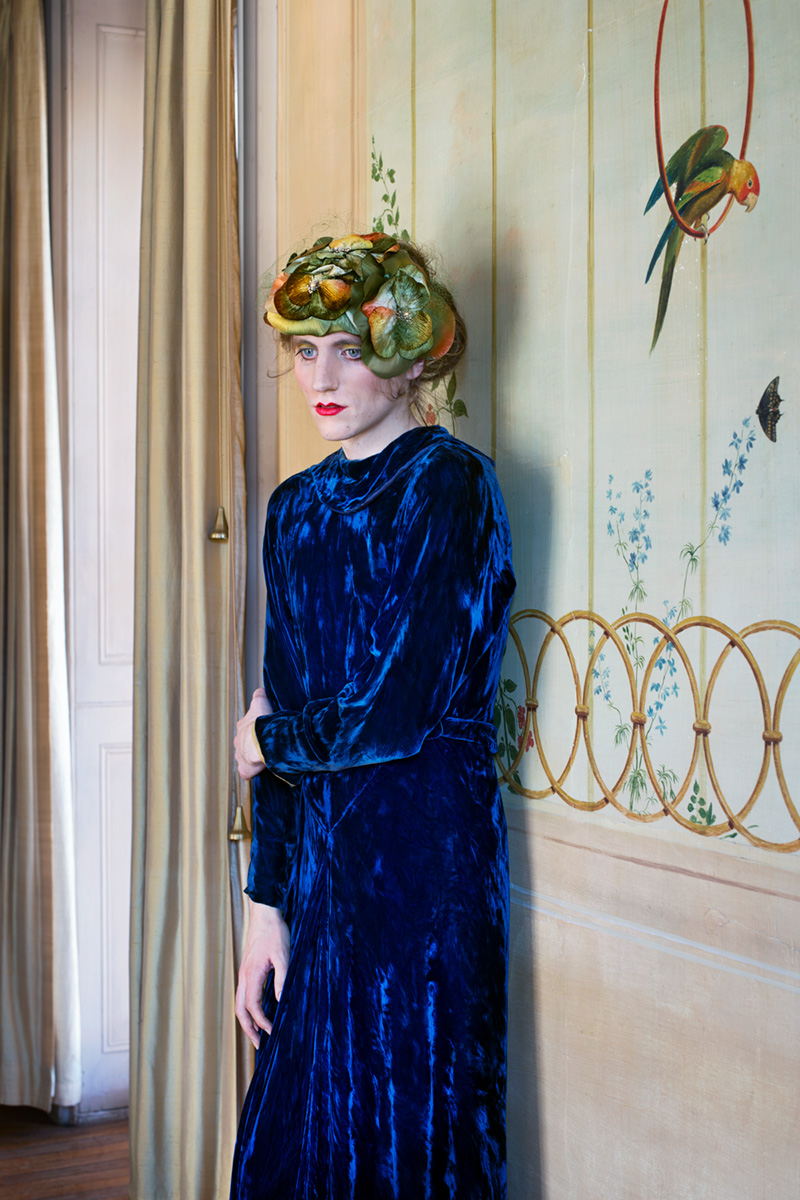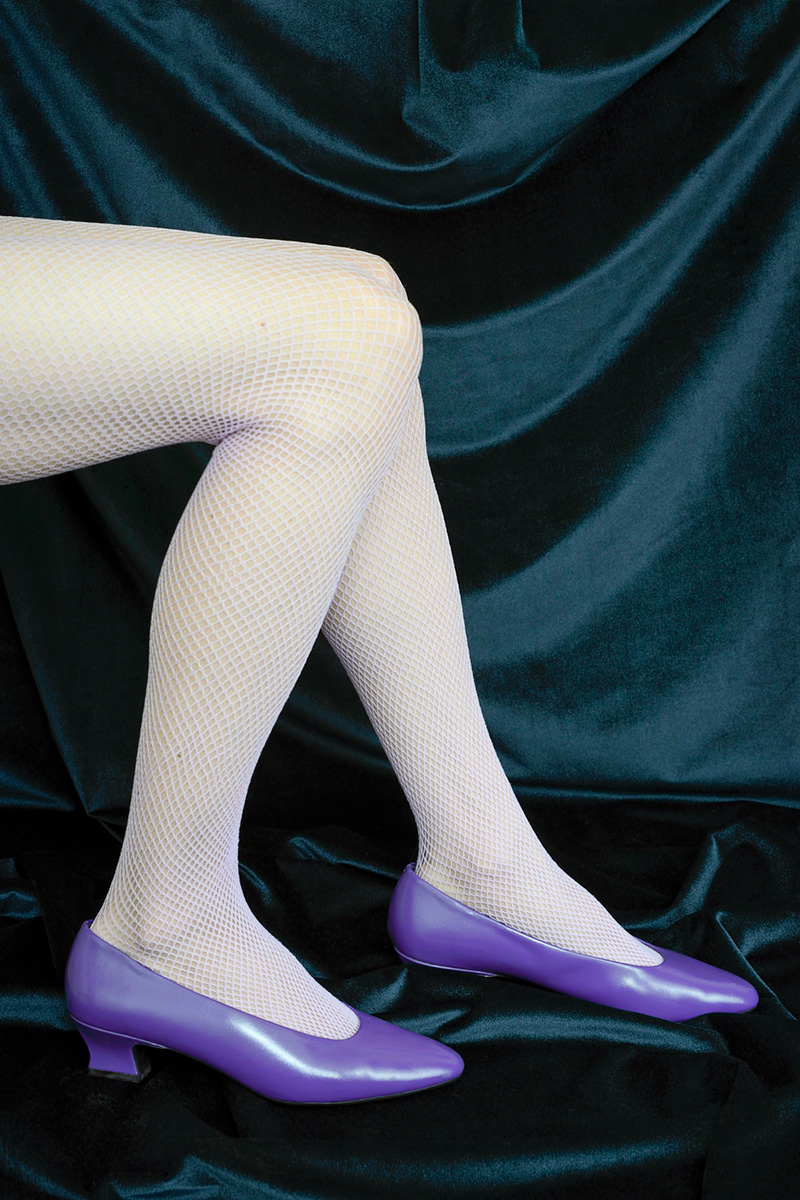Bill Bernstein introduces Lissa Rivera
Bill Bernstein is a photographer living in New York and working internationally. Inspired at a young age by Robert Frank, and later by Diane Arbus, Avedon, and Cartier-Bresson, he started out as a photographer for the Village Voice in the 70s, shooting portraits, live shows, clubs, and street scenes. Later he became Paul McCartney's official tour photographer from 1989 to 2004. His work on the Disco scene of the late 70s was recently exhibited at The Museum of Sex in NYC, and he published DISCO (Reel Art Press, London) - a book compiling his photographs from that era, some of them previously unreleased.
www.discobillbernstein.com instagram: @billbernstein
10 SIGNED COPIES of the book DISCO, The Bill Bernstein Photographs are available exclusively for our readers directly from Bill Bernstein for $60 + shipping, contact him at bill@billbernstein.com and mention JOSETTE in the subject line.
Available at fine bookstores and online. In the UK, available on ReelArtPress.com.
Prints can be purchased through Aperture.org, or online at discobillbernstein.com. In the UK at the Serena Morton Gallery.
beautiful boy by lissa rivera
xenon dancers by bill bernstein
Lissa Rivera is a photographer and curator based in Brooklyn, NY whose work has received multiple grants and honors. She has worked professionally in collections for over ten years, including at the Museum of Sex where she is Associate Curator. She received her MFA from the School of Visual Arts, where she became fascinated with the social history of photography and the evolution of identity, sexuality and gender in relationship to material culture. “Beautiful Boy,” Rivera’s latest project, takes her interest in photography’s connection with identity to a personal level, focusing on her domestic partner as muse.
www.lissarivera.com instagram: @lissa_rivera_
Gallery representation: ClampArt, New York
Upcoming exhibitions in NYC and Cleveland
Josette asked Bill Bernstein a few questions
When would you say people started to take notice of your work?
That’s hard for me to say. My first job was at the Village Voice and I think that people noticed my work then because I was published regularly. This was the late 1970s.
Was there a specific tipping point for you?
Probably the tipping point for me was the beginning of my long-standing relationship with Paul McCartney, which started in 1989. I was Paul’s tour photographer and traveled around the world documenting his world tours until 2005. I am probably best known for this work.
Did someone champion you or had a specific impact on your career?
Paul McCartney by Bill Bernstein
I have had several “angels” or champions in my career. Firstly I owe much of my success to an amazing guy and super publicist and now friend named Joe Dera. Joe was the head of the music department at the very successful PR firm Rogers and Cowan. Joe gave me my first real break by introducing me to Paul and Linda McCartney in the late 1980s and was instrumental in getting me on their American tour in 1989. I learned a lot working so many hours on the road for such a long time.
Also, even before McCartney, I have to give credit to Fred McDarrah, the photo editor at the Village Voice. He was the first one to really see something in me in the late 1970s and persuaded me to become a freelance photographer and work at the Village Voice. He was always very encouraging and a good friend to me.
It was when the Voice sent you to cover an event at Studio 54 for President Carter’s mother that you had your first taste of the club scene and started your famous series of NY Disco photos. What was it that drew you to the subject matter beyond that first assignment?
Yes, Fred McDarrah assigned me to shoot at Studio 54 one night for the Village Voice in December of 1977. I had never been to this already famous NYC club and was very interested in seeing what it was all about. When I first got there there were tables and chairs set up on the dance floor and the people were dressed in tuxedos and gowns for the award presentation. I decided, after the event, I would stay to see what the regular crowd was like so I bought 10 rolls of Tri X film from a photographer who was heading out the door and hung out in the shadows while they put the tables and chairs away and got ready for the regular club goers to enter. What I saw next really opened my eyes. I saw the most inclusive, accepting, creative and diverse group of people I had ever seen. The sense of freedom of judgment and self-expression was amazing and there were great images everywhere I looked. These were the post-Stonewall, post-Saturday Night Fever and pre-AIDS years in NYC and everyone seemed to come to the disco to dance their “Victory Dance”. I came from the 60s Woodstock generation where we believed in Free Love, Peace and anything anti-materialistic, and basically distrusted anyone over 30.
The scene at Studio 54 that night was something completely different. I saw a transgender woman dancing next to a straight Wall Street banker type. Old people, young people, LGBT people, Blacks, Hispanics, famous people and not so famous people, all mixing together on the dance floor having an amazing time together. It was spectacular and I couldn’t put my camera down.
After that night I decided to take a look at all of the other clubs that were happening in Manhattan and the 5 boroughs at the time. Xenon, Paradise Garage, Hurrah, Mudd Club, GG’s Barnum Room, Roseland. I spent the next 2 plus years shooting at these clubs.
ava at gg's barnum room by bill bernstein
larry levan at paradise garage by bill bernstein
The photos have a very strong style. What made you choose to document the colorful and glittery disco era in black and white?
Shooting in black and white was a natural way for me to shoot back then. First of all many of my images were published in the Village Voice which was a black and white newspaper at the time. Also, the clubs were quite dark and I needed a “fast film” and Kodak Tri X 400 ASA film was one of the best fast films then. Also, all of my photographic “heroes” like Robert Frank, Diane Arbus, William Klein, Richard Avedon, were all shooting black and white. True “Art Photography” was black and white, at that time, and even so today.
studio 54 dancers by bill bernstein
Did you feel you were witnessing a key moment of NY history at the time, or did you realize that later on?
I felt that the inclusiveness that I was seeing in these clubs was very unusual and visually very striking. I knew there was “something” going on here at the time, but it was not until much later that I realized just how socially and politically significant this era really was.
As a French 40 year-old, needless to say that I was never part of the NY scene of the late 70s, yet I feel nostalgia for this era that I’ve never known. There is a real mystique about that time, and I think your photos are a truly a piece of that puzzle. When you were putting your book together, did you have a feeling of nostalgia too? Or were you trying to stay away from too much sentimentality?
I think I am always trying to tell a story with my photographs and so a successful photograph has to have many components for me. First, it must be compelling. There has to be a reason to look at it. Then it has to have all of the technical aspect done correctly like exposure, composition, lighting and on and on. And lastly, but most importantly, it has to be honest. You need to believe what you are seeing. I wanted to tell the story of the everyday people who went to these clubs at this period of time in NYC and show the real side of the disco. These unknowns were the real story to me. They were the reason the celebrities came to the discos. There were many other photographers who went to just shoot the celebrities. I was not at all interested in that from the start. I felt that if I was going to shoot a celebrity I would want to have them all to myself, in a studio or location and be able to control the lighting, direction, etc. Not stand on a couch with a bunch of other shooters pretty much getting the same shot. So, it is with this criteria that I put the book together.
studio 54 couch, 1979 by bill bernstein
I’d like to talk about a particular picture that is always part of the selection in all the articles about your show at The Museum of Sex: the one of the blonde woman with a group of men sitting on a couch at Studio 54. It is absolutely fascinating. The composition and the non-verbal dialogue within the group draw you in and you can feel an energy - as well as a certain nonchalance - going through the whole thing. All the characters are connected either by touch or by gaze, it’s really remarkable. Were they posing for you? Or did you just stumble upon them and catch that moment? (Please tell me everything!)
This photo was taken very late one night at Studio 54. I was watching this particular cluster of people dancing and hanging out together all night. The guys would sometimes dance together and other times they would sandwich the girl while dancing. It was hard to tell who was with whom and what was what with this group. At some point later I notice they were all gathered on one of the sofas very involved watching the crowd and whispering in each others ears. They were not posing for me, they were posing for themselves and everyone else in Studio 54. I think they thought “they” were the celebrities that night and they seemed to be in their own little bubble. I knew as soon as I saw them in this position on the couch that this was a fantastic image and I only hoped that I could walk across the room and get a picture off before they all moved. At some point I just went over and snapped a couple of shots of them. I don’t think they even noticed me, or certainly didn’t let on.
Tell us something you wish you had known when you started your career.
I wish I had shot more than I did and kept a better filing system of my then negative and contact sheets. They are all in folders but not easily found. I find that as time goes on, these early shoots of mine become more and more valuable.
You started by photographing unknown dancers in clubs and went on to work with rock stars, CEOs, and politicians, taking portraits and behind the scenes photos. How do you compare the two experiences? Do you have to approach the jobs in completely different ways?
I feel like I have two sides to my photographic career. A photojournalist and a portrait photographer. One “takes” pictures and the other “makes” pictures. I am both. There was a strong connection from my years documenting the NYC club scene and my time spent documenting Paul McCartney on the road for long stretches. Although I very much love this kind of shooting I always call myself a portrait photographer at heart. This has led me to more commercial work for corporations and some editorial work as well. They both feel equally comfortable to me and I am glad I can do both in my career.
“My advice to a young photographer is always the same: look at lots and lots of images both online and in magazines and shoot as much as you can. Every day! Look at your work. It is the best way to learn. Also try to find a personal project (this is how my disco work started) that really means something to you and is important and follow it through.”
Criticism is part of the life of an artist, either from professional critics, buyers, or the public, how do you deal with it? Do you deal with it differently now than when you started your practice?
I think you have to be your own worst critic. Not everyone is going to think your work is great or important, but YOU have to feel this way about it first. I think I have grown to really believe this over time.
Lissa Rivera was the curator of your exhibition at The Museum of Sex. Did you know her and her artistic work prior to the show?
I did not know Lissa’s work when we first met. She called me out of the blue because she had somehow seen my disco work and thought it would be good for a subway ad campaign that they were planning. We met at the museum, along with the creative director, and discussed the ad campaign as well as a potential exhibition later on.
I later looked her up on the Internet and was very surprised, happily so, by her body of work called Beautiful Boy.
GG'S BARNUM ROOM DISCO BATS BY BILL BERNSTEIN
What interested you in her work?
Her overall concept of exploring gender roles in our society and the fact that she worked with her partner/muse on this entire body of work I thought was fascinating. There is such a beautiful blending of her simple and clear photographic style, and styling, and the intimacy that her subject (BJ) reveals to us, the viewer. There is a wonderful feeling of openness and tenderness in these images. It is a great collaboration and they keep producing more and more amazing images together.
XENON DANCE FLOOR BY BILL BERNSTEIN
Indeed, her work deals greatly with gender through intimate portraits. Is this something you have been wanting to explore in your own work? In what ways would you say that her work relates to yours, if at all?
Yes, I think her work explores many of the same themes that I was exploring during my disco shooting. In a way, I see her work as an offshoot of that time period of the late 70s in NYC at the disco. The bending of the gender rules, the openness and inclusiveness. There are many other photographer exploring this popular theme these days but Lissa (along with BJ) has taken it to a very personal and private place and is sharing it with the world.
I think she is a tremendous talent and she is definitely one to watch. I keep telling her she is going to be very famous one day!
Josette asked Lissa Rivera a few questions as well
BEAUTIFUL BOY BY LISSA RIVERA
What is your background in Art?
I received my MFA in photography, video and related media from the School of Visual Arts, NY. Mark Dion, my thesis advisor and mentor inspired my interest in the study of museology and collecting. My final thesis was a period-installation of a sex researcher’s office. I guess in this instance I can quote Oscar Wilde, “life imitates art far more than art imitates life,” now that I am a sex researcher by profession. For nearly a decade, I have been working with private collections and museums with a special interest in esoteric and taboo subjects.
BILL BERNSTEIN'S BOOK, DISCO
BEAUTIFUL BOY BY LISSA RIVERA
You were the curator for Bill’s exhibition at The Museum of Sex, how did you first get to know his work?
I had the idea for an exhibition about the disco-era and was in the process of doing the research. A funny (and a little big-brotherish) thing happened—Facebook suggested I add Bill Bernstein as a friend. He was holding his book ‘Disco’ in the profile image—I immediately investigated! I was quite taken by the work and so were my colleagues at the Museum. We created a subway ad with his portrait of Ava before the exhibition even opened.
What attracted you to his Disco series?
I was looking for images from the Disco era that did not focus on celebrities. When I discovered Bill’s photographs of GG’s Barnum Room I knew I had found something special. Looking at the entire portfolio, I realized what an exciting document of the era he captured. Bill photographed a variety of clubs and party people, including Crisco Disco and Ice Palace, which did not get covered by other photographers. In Bill’s investigation, you get a great sense of the fashion, architecture, set design, and sound equipment of that era. Bill also took some amazing portraits. Looking at his contact sheets I could see that the individuals he captured had a great time performing for the camera. As a photographer, I know this is no easy feat in difficult lighting conditions and with so much movement on the dance floor.
Do you find similarities between your work and his?
Bill photographed clubs that were a stage for the performance of freedom, and a celebration of queerness and femininity. The photographs from my latest work ‘Beautiful Boy’ are also a stage in which my partner and I explore these things.
How did you get started?
I have always identified as an artist, since I was three or four years old. My dad was a big record collector. I remember in grade school being attracted to the cover art on 12” albums for bands like Crass, The Smiths and Joy Division. I was raised to have a strong voice and live life on my own terms. I don’t think there was ever a question that I would end up working in the arts. It is great that this show with Bill combines photography, installation and music.
What inspires you?
Eccentrics, perverts, decadents, risk takers, hermits. People testing the limits of self expression. I love people who built incredible lives with limited resources. I am addicted to biographies. A few of my recent favorites include Stephen Tennant, Josephine Baker, Lee Miller and Louis-Jacques-Mandé Daguerre. I also love studying the ways technology influences culture, especially in vernacular photography and film.
“Working at a small museum you have to wear many hats and produce great exhibitions with the resources at hand. It is very creative — you have to think outside of the box. You get to work with people with many different skill sets — writers, curators, designers, technicians, installers, builders, artists, retailers — each team player has an equally important role. The creative thinking I have developed as an artist helps me in my role at the Museum. Working on a team of individuals with diverse skill sets allows me to absorb new techniques — opening new potential for my personal work. My interests in gender, sexuality, identity, history and technology inform both practices. In each realm it is important to reach an audience on both an emotional and intellectual level.”
BEAUTIFUL BOY BY LISSA RIVERA
You have been working with your partner on a series of portraits called Beautiful Boy, can you tell us about it?
BEAUTIFUL BOY BY LISSA RIVERA
"Beautiful Boy" is an ongoing project focusing on my domestic partner as muse, documenting our exploration of femininity and the nuances of photography as a transformative medium. I am using photography as a testing ground for my partner, who is genderqueer, to visualize multiple feminine identities. The photographs provide a canvas to investigate the visual language of womanhood that I was raised with, and that my partner is only beginning to explore. The photographs recall childhood fantasies of dressing up, tapping into deep-seated narratives about desire, beauty, freedom and cultural taboo. Although our emotional relationship is private and real, we perform a romanticism that is obsessive and decadent. The fantasy of dressing up transforms the experience of being photographed into one that fuses identity-creation with image-creation.
The portraits are not only compelling because of their exploration of gender but also very beautiful, with vibrant colors and mise en scene and accessories. Can you tell us what prompted this aesthetic choice? Was it just obvious to you that this was how it should be? Or did you toy with several ideas?
BEAUTIFUL BOY BY LISSA RIVERA
I am really interested in fashion photography and cinema from the 1940s through the 1960s. These photographers and filmmakers were hyper-aware of the symbolism of color. Individuals from Erwin Blumenfeld and Horst P. Horst to Alfred Hitchcock were influenced by artistic movements such as Dada and Surrealism, as well as the writings of Freud. They used the visual language of femininity as a tool to explore the subconscious. Although they were creating popular images for commercial enterprises like Vogue and Paramount Pictures, their imagery was both complicated and seductive. These media creators constructed archetypal images of the ‘American Woman’ that still affect culture today. I am interested in the way that these depictions are embedded in the ancestry of contemporary visual language.
How has your work evolved since you started?
When BJ and I started taking images, it was very private. The earliest photos were quite experimental. Although based on fantasies, the photographs are, in a way, a very real document of our relationship together. The project is a personal exploration of desire and gender for both of us. At first, we mostly kept the project to ourselves. Once we began sharing the work, the attention was a bit disorienting, but we found a way to detach from it and stay focused. Our first images were made with fabric backdrops I would set up in the kitchen of our apartment. Now that BJ is back in school getting his PhD and I am working so much at the Museum, we prefer organizing long weekends to shoot on location. Like mini adventures.
Have your priorities changed since you started?
My priority is always to express myself as fully as possible and make images that have many layers of meaning. My partner is a historian and brings a lot of personal research to the way he inhabits the photographs. We love experimenting. I like the idea of having a ‘model wife’ as so many male photographers have experienced. I hope to have some photos of BJ when he is old and wrinkled!
Do you already know what your next project will be, and if so can you tell us about it?
I don’t want to jinx it ;)
BEAUTIFUL BOY BY LISSA RIVERA
How do you stay motivated?
Well, I really just feel so lucky. Lucky to have a job at the Museum of Sex with people who believe in me, and where my life intersects with inspiring people like Bill Bernstein! I am also incredibly fortunate to have a partner and muse who is so generous and creative. I don’t take these things for granted and cherish what I have as an incredible opportunity.
Tell us something you wish you had known early on.
To trust in my own voice.
Criticism is part of an artist’s life, how do you deal with it?
Constructive criticism is a challenge that drives me to produce better work. Without losing my voice, I try to allow it to force me to ring clearer. I have learned to develop empathy towards those who offer opinions coming from a negative place. It took a while to learn these things.
What's coming up for you?
I am excited to share that the first solo show for “Beautiful Boy” is opening at ClampArt, New York June 1 and will be on view through July 15, 2017. The exhibition will also be on view at the Cleveland Print Room this coming fall.
